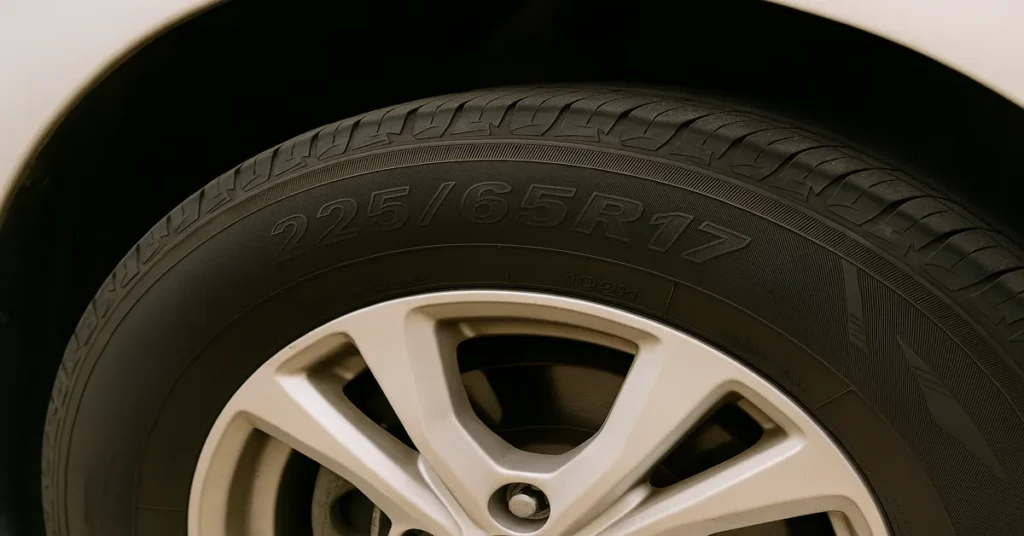It’s not flashy. It’s not trendy. It doesn’t scream innovation. Yet it’s everywhere—from suburban cul-de-sacs in Ohio to the high-altitude roads of the Himalayas. Meet 225/65R17, a tire size so common, so practical, and so reliable that it’s become the quiet workhorse of modern mobility—especially for mid-size SUVs and crossovers.
At first glance, the alphanumeric string “225/65R17” might appear cryptic, the kind of thing only a mechanic or tire technician would notice. But this simple specification tells a complex story of transportation trends, safety standards, consumer behavior, and the evolution of the automobile itself.
In this article, we unpack what the numbers mean, why this particular tire size matters now more than ever, and how it’s shaping everything from fuel economy to environmental sustainability. This is not just a technical breakdown—it’s a look at a small, circular piece of equipment with a global impact.
What Does 225/65R17 Mean, Anyway?
Let’s begin with the fundamentals. The designation “225/65R17” follows a globally standardized format for tire size and is interpreted as follows:
- 225 = Tire width in millimeters
- 65 = Aspect ratio (sidewall height is 65% of the width)
- R = Radial construction (standard for modern vehicles)
- 17 = Diameter of the wheel rim in inches
This size is part of the passenger vehicle class, with dimensions and ratios that strike a careful balance between comfort, road grip, durability, and efficiency.
It is especially popular on:
- Mid-size and compact SUVs (e.g., Honda CR-V, Toyota RAV4)
- Crossovers and light trucks
- Some AWD sedans and wagons
- Fleet and utility vehicles
But its reach extends far beyond a single class of cars—it touches on issues of driver safety, consumer choice, regulatory design, and global manufacturing logistics.
The Rise of the SUV, and With It—225/65R17
In the past decade, SUVs and crossover utility vehicles (CUVs) have exploded in popularity, largely replacing sedans in family garages. The shift wasn’t just about aesthetics; it was about versatility, ride height, and perceived safety.
As these vehicles became mainstream, tire manufacturers needed a solution—a size that could support the weight and height of these taller vehicles while still offering the smooth ride expected by consumers used to sedans. Enter 225/65R17.
With its relatively tall sidewall, this size absorbs road imperfections better than low-profile tires. The 17-inch rim diameter provides enough space for braking systems and suspension components, while the 225 mm width gives it adequate traction in rain, snow, or gravel.
In short, 225/65R17 became the Goldilocks tire—not too wide, not too narrow; not too low, not too high.
Driving Experience: What 225/65R17 Feels Like on the Road
Drivers often underestimate the impact of tires on the total driving experience, but tire geometry affects everything from fuel economy to steering feel.
With 225/65R17 tires, drivers can expect:
- Comfortable ride quality due to the 65% aspect ratio
- Moderate road noise, depending on tread pattern
- Predictable handling for daily commuting
- Sufficient grip in most weather conditions
- Lower susceptibility to rim damage on rough roads
Compared to lower-profile performance tires, 225/65R17 may lack razor-sharp handling at high speeds, but it offers a forgiving, stable ride that many family and fleet drivers prefer.
A Quiet Environmental Hero?
In a world increasingly attuned to environmental sustainability, every component of a vehicle—including tires—is under scrutiny.
Here’s how the 225/65R17 contributes to the eco-conversation:
- Lower rolling resistance than oversized tires, which improves fuel efficiency
- Extended tread life compared to sportier tires, reducing landfill waste
- Compatible with hybrid and plug-in hybrid crossovers, supporting greener transport
While no tire is truly “green,” the modest dimensions of 225/65R17 mean it burns less rubber, requires less energy to manufacture, and causes less tire particulate pollution than heavier-duty or oversized tires.
How It Compares: A Look at Alternative Sizes
To truly appreciate 225/65R17, consider how it compares with other popular sizes:
| Tire Size | Width (mm) | Aspect Ratio | Ride Comfort | Fuel Economy | Price Range |
|---|---|---|---|---|---|
| 215/60R16 | 215 | 60 | High | Very High | $75–$120 |
| 225/65R17 | 225 | 65 | High | High | $100–$160 |
| 235/55R18 | 235 | 55 | Moderate | Medium | $140–$200 |
| 245/50R19 | 245 | 50 | Low | Low | $180–$250 |
As the table illustrates, 225/65R17 offers an appealing middle ground, both financially and functionally.
Safety and Weather Performance: All-Season Resilience
Most 225/65R17 tires sold today are all-season or all-terrain varieties. Their popularity with SUV owners means they must perform well in varied weather conditions.
When properly selected, 225/65R17 tires can provide:
- Aquaplaning resistance with wide tread grooves
- Snow traction, especially in 3PMSF-rated (Three-Peak Mountain Snowflake) versions
- Reliable braking distance on wet or dry roads
- Confidence on light off-road surfaces, like gravel or mud
Of course, not all tires are created equal. Within the 225/65R17 size, options range from highway comfort tires to rugged all-terrain patterns, allowing drivers to choose based on lifestyle and region.
Tire Brands Leading in the 225/65R17 Segment
Given its widespread usage, nearly every major tire manufacturer offers models in this size. Among the most frequently reviewed and purchased are:
- Michelin Defender LTX M/S
- Bridgestone Dueler H/L Alenza
- Continental TerrainContact
- Pirelli Scorpion Verde
- Goodyear Assurance WeatherReady
- Yokohama Geolandar G015
- Falken Wildpeak A/T Trail
Each offers distinct advantages in terms of:
- Treadwear warranties (often 60,000+ miles)
- Noise control
- Fuel-saving technologies
- Run-flat options
- Winter certification
Global Supply Chain Implications
The rise of 225/65R17 hasn’t just changed what people drive—it’s reshaped how tire manufacturers plan, produce, and distribute.
- OEM standardization: Automakers increasingly specify this size as original equipment (OE), creating bulk demand.
- Logistics: Warehouses prioritize this size for stocking, ensuring availability in urban and rural markets alike.
- Production hubs in Asia and Eastern Europe are scaling up 225/65R17 output, aligning with global SUV sales data.
In short, a bump in SUV sales in Brazil or India creates ripple effects in tire factories from Thailand to Slovakia.
Cost and Longevity: A Long-Term Investment
The cost-per-mile of a tire is often more important than the upfront sticker price.
Most 225/65R17 tires fall into the mid-range pricing tier, typically costing:
- $100 to $160 per tire (premium brands)
- $70 to $100 (economy brands)
With tread lives between 55,000 and 80,000 miles, depending on brand and driving style, the long-term value is compelling. Regular rotation, alignment, and pressure checks can further maximize ROI.
Electric Vehicles (EVs) and the 225/65R17 Dilemma
EVs are heavier than their combustion counterparts due to battery packs, requiring tires with higher load ratings and low rolling resistance.
While some EVs like the Toyota RAV4 Hybrid still use 225/65R17, others are shifting to slightly wider or reinforced sizes. Tire makers are responding by offering EV-compatible compounds in this dimension, such as:
- Silica-infused tread for reduced heat
- Stiffer sidewalls for added torque response
- Noise-dampening foam liners
The future of 225/65R17 in the EV era depends on continued innovation in material science and weight tolerance.
Cultural Impact: Why Size Matters in Design and Perception
There’s a psychological element, too. Larger tires suggest power, safety, and capability, even when not functionally necessary.
The 225/65R17 tire:
- Complements the “rugged family car” image
- Visually supports the profile of a higher-riding SUV
- Balances urban and off-road expectations
For many consumers, it hits the aesthetic sweet spot—substantial, but not oversized.
Final Thoughts: A Code That Carries More Than Numbers
In the grander scheme of transportation, tire size might seem like a footnote. But the widespread adoption of 225/65R17 reflects a global consensus on comfort, safety, versatility, and cost-efficiency.
It tells the story of how people live: carrying families, commuting to work, adventuring on weekends, and choosing flexibility over formality. And like many unsung innovations, its greatest strength is that you rarely have to think about it—it simply works.
So the next time you glance at the sidewall of your vehicle’s tires and see those numbers, know this: you’re rolling on one of the most thoughtfully balanced components of modern mobility.







